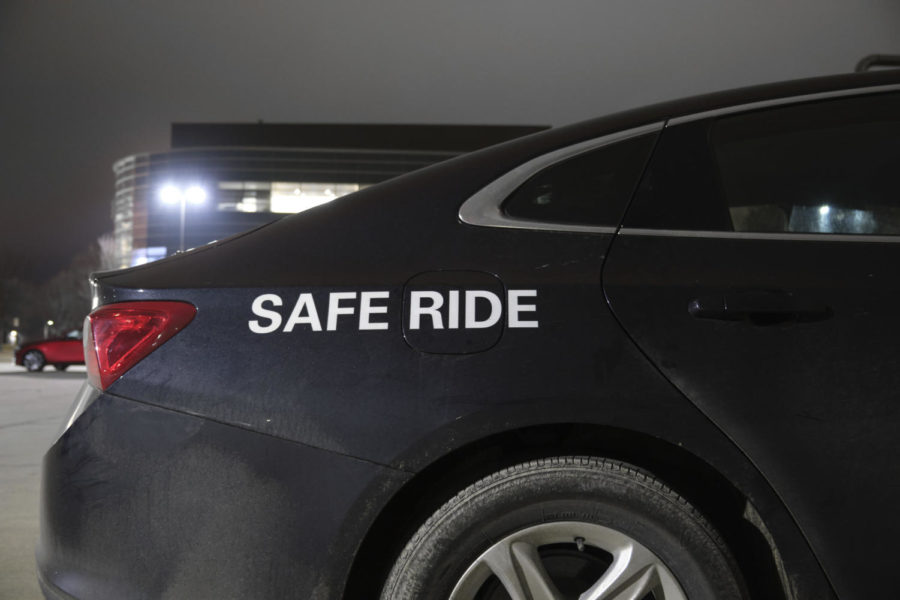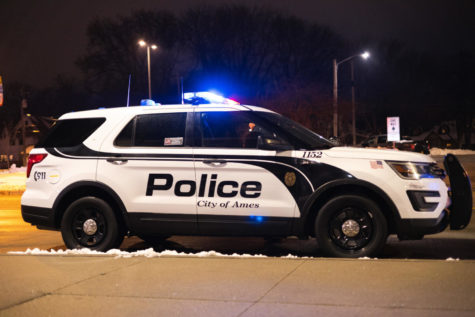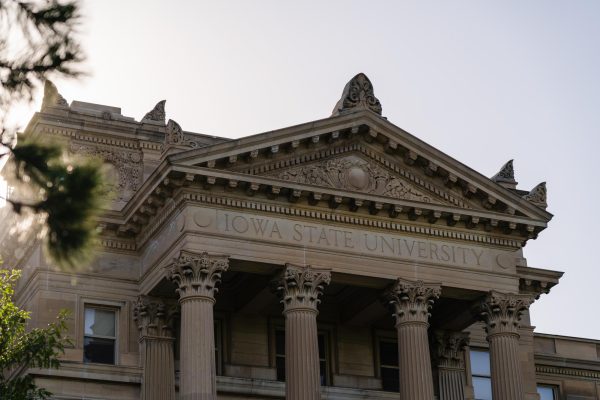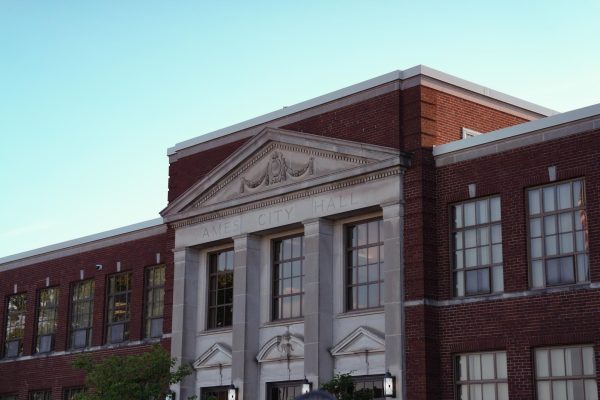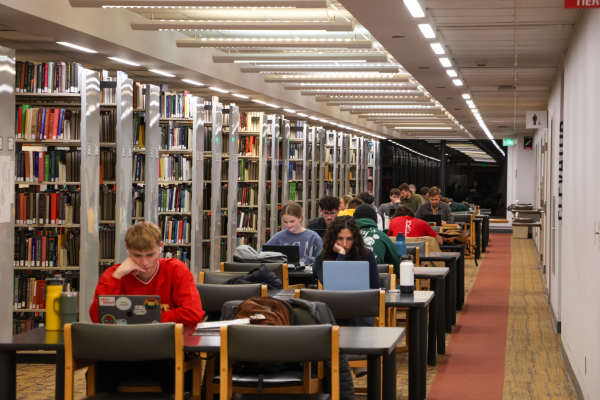How long should you expect to wait for your SafeRide?
SafeRide is a free transportation service that students can utilize on campus from 6 p.m. to 5:30 a.m.
7:45 p.m.
8:39 p.m.
9:03 p.m.
When Iowa State students request a SafeRide, a driver is often available within minutes of their request. Other times, a student will watch the clock tick by for more than an hour before a driver is able to pick them up.
The average response to a SafeRide request was 20 minutes and 27 seconds from Aug. 1, 2021, to May 31, 2022, according to data received from Elizabeth Morse, a records clerk for the Iowa State University Police Department (ISUPD). Within this time frame, the program completed 8,619 rides.
The wait time for most nights is eight to 10 minutes, and more than 270 rides responded to a request in five minutes or less. However, outliers in the response times often drive this number up, according to SafeRide Director Carrie Jacobs.
The longest wait time for a completed ride was 1 hour and 50 minutes on Sept. 11, 2021, the day the Cyclones played against the Hawkeyes at Jack Trice Stadium. Other wait times from that day include 1 hour and 20 minutes and 1 hour and 25 minutes.
Overall, more than 140 SafeRides arrived for pickup after more than one hour last year.
“SafeRide is not necessarily an on-demand ride,” Jacobs said. “Depending on the time of day, you may have a little bit of a wait before your SafeRide is able to come and pick you up.”
SafeRide staff feels the service is often misused, which can increase the wait times and make the drivers less available to students who use it for its intended purpose.
“Unfortunately, not every individual who requests a SafeRide is using it as a safety issue,” Jacobs said. “A lot of people use it as kind of a free ride, even though they don’t have any safety concerns.”
SafeRide is a free transportation service available to students who do not feel safe walking on campus during the evening and overnight hours. It is offered 365 days a year from 6 p.m. to 5:30 a.m. by ISUPD.
“SafeRide was actually something that came out of a need from our community because they wanted the ability to have a service that was free of charge for students, faculty and staff,” Jacobs said. “They would be able to request a ride from a known entity so that they could go from one point on campus to another point on campus.”
SafeRide is designed to be a resource for danger prevention, but drivers do not question riders on the specific perimeters of their request because there are several personal reasons people may request a ride. This can allow people to use the system to jump between parties or avoid cold weather, according to Jacobs.
Alexa Glandon, a senior studying biology, requested a SafeRide roughly once a week as a freshman in 2019. One of her reasons was to avoid Iowa’s winter weather while traveling at night.
“Many of our students can barely afford college, let alone proper winter attire to be able to walk in freezing temps,” Glandon said. “The bus helps with that, but they aren’t 24 hours.”
Glandon also utilized SafeRide for her safety. Celia Barquin Arozamena, who was an Iowa State student, had been stabbed to death while golfing alone in September 2018, which put Glandon and many other students on edge.
“Everybody was just really scared to walk alone at night, especially women,” Glandon said.
Glandon continues to utilize SafeRide but typically only requests a ride once a month now. The longest she has ever had to wait is seven minutes.
SafeRide drivers consist of Campus Safety Ambassadors (CSAs). CSAs are student workers within ISUPD who are also responsible for checking locks around campus.
When they are on duty to receive SafeRide requests, they are in charge of manually entering the wait times given to users while they wait for a ride. If there are no active requests, CSAs will often perform general patrol duties throughout campus with a SafeRide vehicle nearby.
Jacobs said she believes the CSAs make SafeRide more specialized than busses and ride-sharing platforms because their connection to the university offers the reassurance that the drivers are trusted individuals of the community.
“I’ve never had bad experiences,” Glandon said. “[The drivers] were always really nice and really funny and very talkative.”
Glandon discovered one of her favorite bands, Greet Death, from one of her SafeRide drivers. Though Glandon does not remember the driver’s name, she credits them whenever someone compliments her music.
The number of active drivers varies depending on the day and staff availability, but ISUPD tries to ensure there are at least two drivers and two cars on Thursdays, Fridays and Saturdays. These nights are often much busier than other days of the week.
There also tends to be a higher number of requests on the days of popular Iowa State athletic events. The pick-up and drop-off locations are not included with the data due to privacy concerns, but many of these requests occur within an hour of the games’ end times.
Sometimes, students will cancel their ride requests. Students requested 11,841 rides last year, and 3,222 of these were later canceled, according to the data.
Many cancellations often occur within ten minutes of a request, but many also occur after a long waiting period. Students are not required to explain the reason for canceling a ride.
The longest wait time before a cancellation was 1 hour and 31 minutes on Oct. 30, 2021, the Saturday of Halloween weekend. Other canceled rides with wait times of more than 1 hour coincided with popular ISU athletic events.
Rides requested during winter break had a higher percentage of completed rides, and most of the cancellations that did take place occurred within 10 minutes.
Jacobs believes education about SafeRide as a safety tool is important and hopes the campus community will continue to support the program via funding.
“I want to continue to see SafeRide operate,” Jacobs said. “I believe [SafeRide] makes a difference for students when they’re thinking about where they want to go to college.”
Campus Safety Coordinator Adam Schwebach testifies to SafeRide’s mission from both a personal and professional perspective. He and other drivers often build a relationship with the people who use their services, which gives them the opportunity to learn about the community’s diverse backgrounds.
“I’m from a tiny town getting thrown into this program where all of a sudden, I’ve got somebody sitting right behind me that’s from Peru, from Cairo, everywhere,” Schwebach said.
In a smaller town, Schwebach and his community rarely felt unsafe. People constantly left their doors unlocked and their keys in the car. When he came to Iowa State, he did not understand the need for a service like SafeRide.
After meeting several international students through SafeRide who grew up in dangerous environments, Schwebach realized the importance of a service like SafeRide.
Riders are not currently able to leave drivers feedback or reviews, but students who use the app will sometimes leave their drivers a text message to thank them.
Students can request a SafeRide through the SafeRide ISU app or by calling 515-294-4444. Additional information can also be found on the ISUPD website.
Your donation will support the student journalists of the Iowa State Daily. Your contribution will allow us to purchase equipment, send our student journalists to conferences and off-set their cost of living so they can continue to do best-in-the-nation work at the Iowa State Daily.


